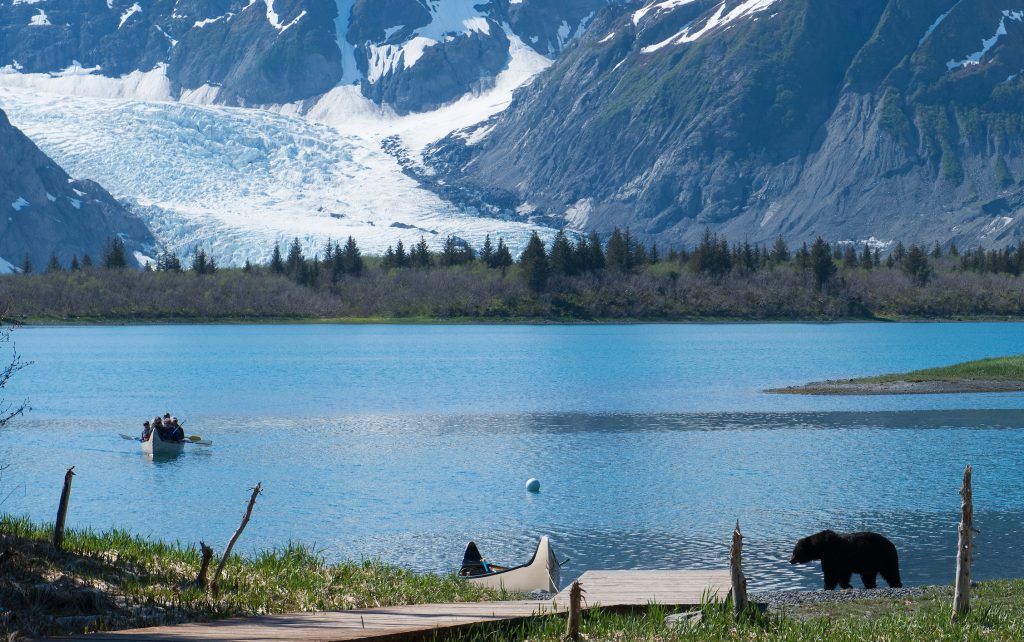From kayaking through wetlands to scuba diving in the deep sea, marine tourism appeals to travelers with its wealth of water-related activities. Approximately 71% of Earth’s surface is covered by water, giving travelers plenty of opportunity to explore above, below, and near oceans, lakes, estuaries, beaches, ice shelves, and coastal communities.
Marine environments are also becoming increasingly vulnerable from climate change, pollution, and other manmade conditions. Tour operators can and should guide both travelers and activities in a way that has a long-lasting positive impact.

Running an environmentally friendly marine-based company requires a business built on sustainable principles. Eliminating plastic, properly disposing of worn-out gear, and engaging in responsible activities are important, but, said Alex Brylske, president of Ocean Education International, “those are fringe activities. That’s not what has to happen in regard to building a truly sustainable business. It has to be built into the ethos of the operation.”
Though building a tour company focused on sustainability from the outset may be ideal, there are still many things operators can and should do today to offer responsible marine experiences.
Engage in low-impact marine activities
Not all water-related tourism activities are created equal. Some, like jet skiing and consumptive sport fishing, can be disruptive and even dangerous to the local environment. Tour operators interested in offering marine activities can focus instead on experiences that minimize negative impact and emphasize education and awareness. This includes activities like diving and snorkeling, watching wildlife, release fishing, sea kayaking, and canoeing.
However, even in these low-impact activities, tour operators must evaluate each environment and situation to ensure they are offering the most appropriate activities.
Think beyond the boat
Marine tourism also includes coastal areas, so tour operators need to consider how marine-related activities impact local communities.
Patronizing locally owned marinas that abide by environmental regulations and run environmentally focused programs; hiring local guides; learning from people who’ve lived in coastal communities for generations; participating in local research and coastal management initiatives. All of these examples support the coastal community and ensure economic resources stay in the area. They also provide cultural and historical context for the marine environment.
Include minimal-impact training and education prior to any marine-related experiences
Every traveler orientation program can encourage responsible practices. Provide pre-departure information about appropriate gear and clothing, such as wearing reef-friendly sunscreen. Provide more in-depth information about the general environment, what travelers can expect to see and do, and what the expectations are for a responsible marine experience.
Before diving in, reemphasize important on-site reminders. For example, travelers should avoid standing on or touching fragile marine environments like coral, feeding fish or other marine wildlife, and disturbing sediment, coral, or animals. Make it clear that travelers who don’t follow these policies won’t be permitted to participate.
Use language and explanations that emphasize the entire marine environment and ecosystem
To bring a deeper level of awareness and education into water-based experiences, tour operators need to explain and emphasize the entire marine environment and ecosystem. Many guides are knowledgeable about the marine environment, but they lose an opportunity for a deeper educational experience when they only answer the questions travelers ask. In a pleasant, recreational environment, any question is an opportunity to explain ecological concepts, what problems exist in marine ecosystems, and what travelers can do to address them.
For example, snorkelers and divers always ask, “What is that fish?” Instead of simply stating what the name of the fish is, explain what its habitat is and why it’s important in the greater ecosystem. This leads to a deeper conversation about the importance of conservation efforts and protecting marine biodiversity.
“The guide is a critical link in making sure clients not only enjoy the experience and feel safe but they are connected. By making that connection and taking a half-step more, you can actually turn their interest into advocacy,” Brylske said. In turn, this can create ripple effects long after a dive is complete or a kayak has been pulled out of the water. “This creates stewards out of people who go back home and do something about what they’ve experienced.”
